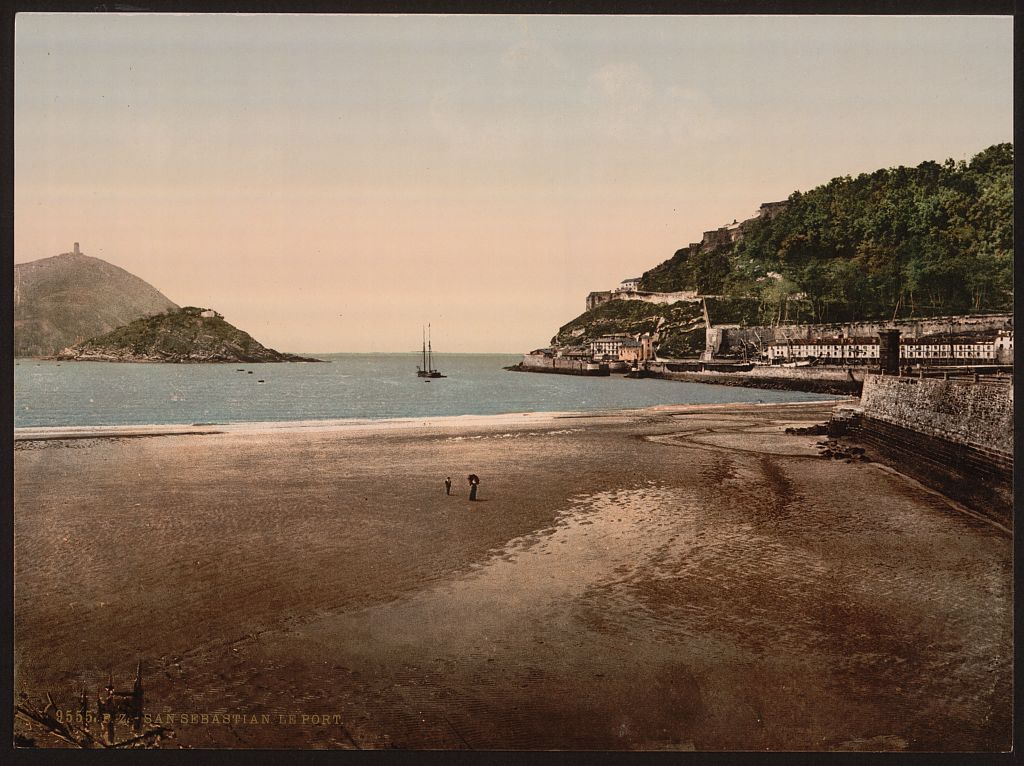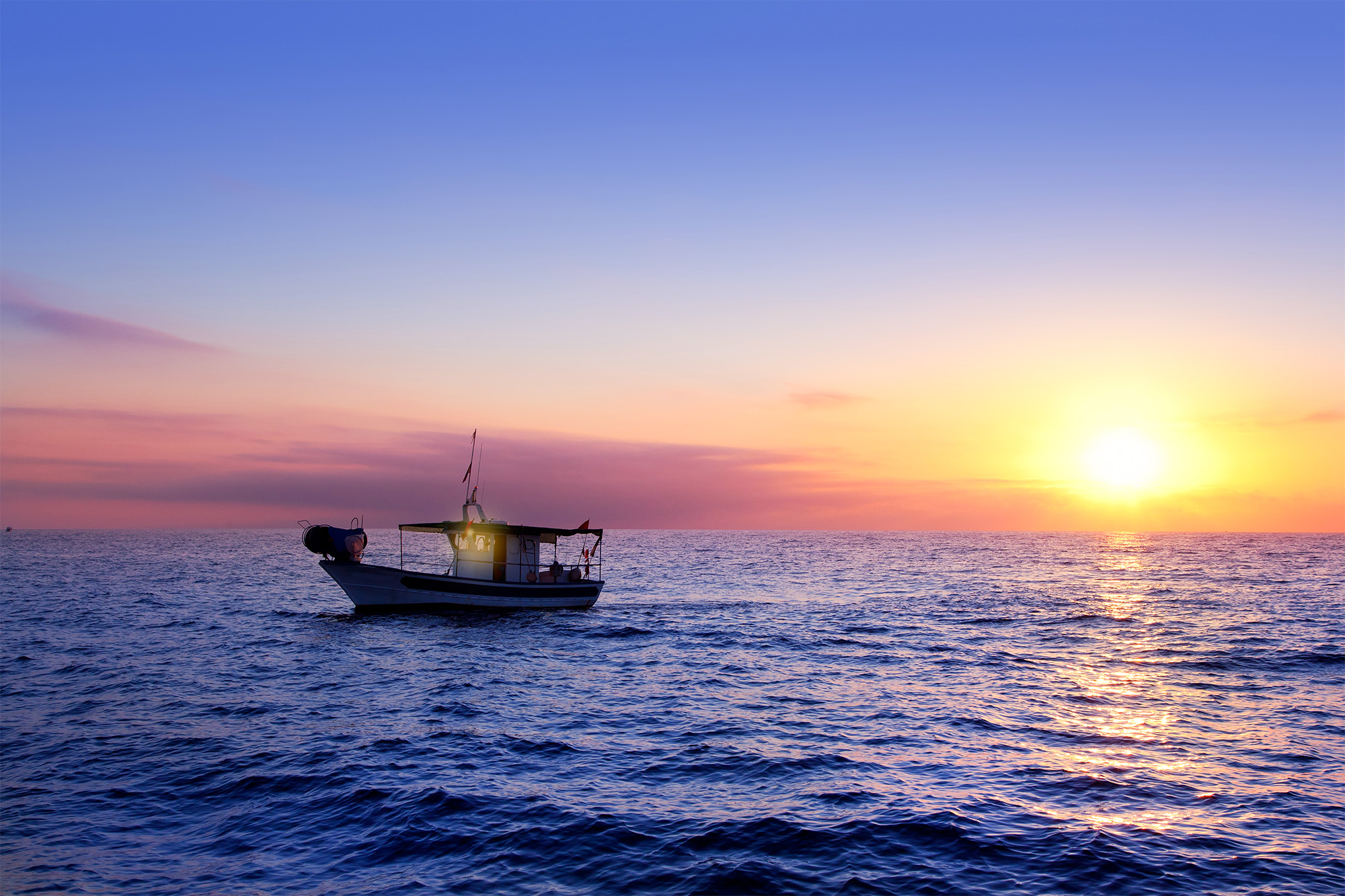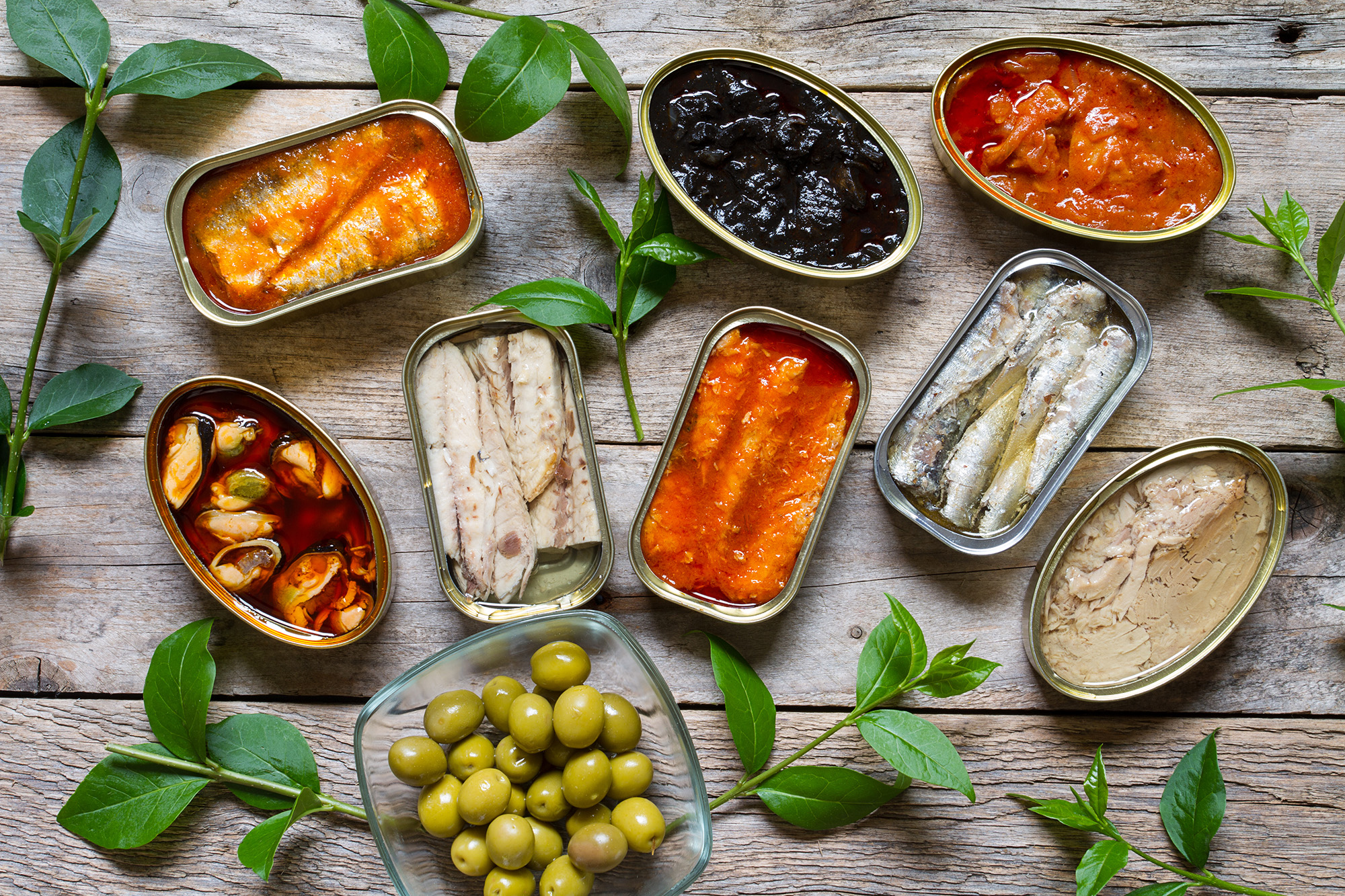Conservas: Spanish Seafood for the Ultimate Tapas
Written by Jordan Brown June 23, 2023If you’re really into amazing seafood, you might know Spain and Portugal are renowned for their fresh and mouth-watering supply. The coastal waters surrounding the Iberian Peninsula are bursting with some of the best catches in the world. Countless traditional dishes from these countries feature straight-from-the-ocean ingredients that highlight their rich fishing history.
But if you can’t book a trip to Galicia right now, or you’re not quite ready to attempt cooking squid yourself, there’s another place you can get an authentic bite of the Mediterranean seas: a can.
Although your mind probably immediately went to grocery store canned tuna, Seafood conservas are a tinned seafood in an entirely different league from the pale chunks of fish found in cans across the United States. And while the tuna salad sandwich is a time-honored lunch tradition, there’s little comparison to opening a can to reveal velvety mussels in tangy escabeche or tender octopus in rich Spanish olive oil.
If you haven’t already discovered the magic of conservas, jumping in can be a little overwhelming. Especially if you’re used to the canned seafood prices in the average American grocery store. But if you’re ready to dive into a world of flavor, you might just find your new favorite pantry staple.

The harbor - San Sebastián, Spain, ca. 1890-ca. 1900. Source: Library of Congress
The History of Conservas
Before the introduction of canning, Spain and Portugal were already preserving fresh seafood with salt curing methods, so canning as a means of preservation was a natural next step. But conservas weren’t invented by either country.
Actually, the credit for canning goes to Nicolas Appert, a French chef, confectioner, and distiller. This Jacques-of-all-trades spent years developing the process after Napoleon offered a reward to anyone who could find a method of preserving food for extended travel.
Appert was finally successful in 1809, sealing and boiling glass jars of food to sterilize the contents, similar to the way it’s done in home kitchens around the world even today. Peter Durand in England patented a similar idea using more hardy tin cans in place of glass a year later in 1810. Within a few years, mass production of canned goods (using both methods) was taking off globally.
While much of the rest of the world used canning as a way to preserve whatever food they could (even sometimes at the expense of flavor), Spanish and Portuguese fisheries saw an opportunity to create something more; a way to capture the incredible flavors of their waters and enjoy them in a whole new way, in or out of season. And so, a delicacy was born.
At its height around WWII, the canning industries of both countries saw several hundred individual companies. After the war, demand for canned food declined, and many canneries shuttered. But some survived - a considerable number of artisanal and generational family canneries included.
In recent years, demand for conservas has increased, popping up in wine and tapas bars all over. And as the hunger for preserved food continues to grow, so too will the appetite for this unexpected decadence.
Swimming in Sustainability
Conservas not only offer an opportunity to experience the fresh seafood of the Atlantic and Galicia at your table, but from catch to container they’re the most environmentally conscious way to enjoy it short of visiting the source.
Fisheries follow strict guidelines in harmony with the natural replenishment of seafood populations. Everything is harvested in the peak of their season when the numbers and size are just right. Great care is taken to ensure strong numbers remain in the waters for generations to come.
When it comes to storage and transport, fresh seafood has to be delivered (often flown in if you’re inland) around the world immediately, or frozen to prevent spoilage. Canned, on the other hand, is designed for longer transit times in ambient temperatures. It can be shipped by boat or by land and requires fewer overall resources and energy to keep shelf stable. Plus, labeling requirements including lot numbers, dates, and locations allow for easier traceability directly to the source.
And the bow on the eco-friendly box? Since glass and metal are generally recyclable, the packaging for conservas is far more likely to be recyclable than the plastic wrapping and foam trays fresh and frozen seafood can often be found in.

The Catch of the Day
There’s something truly magical about the quality of seafood fresh from the ocean, and these nets haul in some of the best in the world. Mackerel, sardines, anchovies, mollusks, octopus and squid, clams and more are pulled from cold waters of the Atlantic or the coastal shoals of Galicia and Cantabria at the peak of freshness and taken to market within 24-36 hours.
the sea and firm, but still incredibly tender meat, some offer a mild taste, and some bring a burst of intensity. Artisinal canners use only the freshest seafood in their conservas, owing the incredible array of tastes and textures to these very fishermen. By preparing and packaging peak season catches within hours of capture, they preserve the quality and delicate flavor of meat at the peak of freshness.
What's in the Can?
Seafood conservas in Spain and Portugal are tinned with the intent to preserve and enhance the freshness of the seafood. Conservas makers pair each bounty of the sea with oils, sauces, or seasonings that infuse into the natural flavor and textures of the seafood in the can over time, aging it like a fine wine and giving it a personality all its own.
As Anthony Bourdain said in an episode of No Reservations (video link) after trying a tin of Galician mussels, “You know, the general assumption is that when you put something in a can, you’re losing something. In this case, you’re absolutely bringing something else.”
Many artisanal canneries have had generations of the same families creating recipes and lovingly hand-packing tins; the result is a robust market of top-tier conservas with as many flavor combinations as there are canneries.

The Feast
Now that we’ve covered nearly everything else about conservas, it’s time to eat. Treating yourself to this traditional Mediterranean delicacy is really a culinary ‘create your own adventure’. They’re incredibly versatile and can be as easy or complicated as you want them to be. When Anthony Bourdain was blown away by those mussels, he was eating them with a toothpick straight from the can in a Spanish tapas bar.
But if plain from the tin isn’t your style, olives, Spanish potato chips, and hot or tangy peppers are common accompaniments. Warm crusty bread, lemons, and butter on the side are a must (as is soaking said bread in your favorite sauce). You can tip a whole tin atop a leafy salad or seek out a recipe that features the flavors in a whole different way. The world of conservas is your (tinned) oyster.
What are some of the most popular conservas?
Mackerel (Caballa):
Mackerel is an oily fish with a firm yet tender texture and a buttery fish flavor that can vary from mild to medium fishiness. They’re commonly found packed in rich extra virgin olive oil or tomato sauce, and you can sometimes find uniquely spiced versions.
Flake it over a salad or sliced avocado, toss it in pasta, or use it to top a piece of buttered bread. Mackerel pairs especially well with tangy or rich buttery flavors.
Sardines (Sardinas):
Sardines have a well-rounded, mild but briny flavor. Packed with anything from EVOO, to spicy peppers, to lemon essence (a personal favorite), sardines are among the most approachable and well-loved of the conservas family.
Delicious on crackers, with garlic confit and lemon on bread, over salads, on sandwiches, and in pasta.
Anchovies (Anchoas):
These may not be the salt-packed anchovies you’re thinking of. While there is a distinct brine and mild saltiness, these are generally a bit more delicate.
Use anchovies in sandwiches, on crackers, or eat plain. Pair with a drizzle of lemon or add crisp pickled sweet peppers.
Octopus (Pulpo):
This jewel of Galicia is characterized by firm but tender meat that has a mild flavor similar to crab or scallops. You’ll usually find octopus packed in Spanish olive oil or a complementary sauce.
Make a simple salad with lemon, garlic, parsley and salt and pepper to taste. Cook with potatoes and paprika or olives for a mouthwatering warm tapas option.
Cockles (Berberechos):
These small clams are often simply steamed and placed in a delicate sea salt brine that keeps them tender and approachable.
Make a zesty ceviche, add them to salads or pasta, or drizzle with lemon.
Mussels (Mejillones):
Most commonly served in a tangy escabeche pickling sauce, these plump, juicy, and velvety mussels are packed with zing and briny flavor.
Serve them plain, on chips or warm crusty bread, or toss in pasta with fresh lemon, garlic and a bright herb like mint or parsley.
Squid (Calamar):
Super tender squid are cooked to perfection, then usually stuffed with their tentacles or rice, and bathed in oil, their ink, or a rich tomato and wine sauce.
Squid pairs well with starchy foods like rice, beans, and potatoes.
El Fin
The world of conservas is as wide as the ocean is deep. If you’re a fan of seafood in general, chances are there's a conserva out there you’ll start wanting in your pantry at all times. The only question left to ask is: Where are you going to start?
Products Mentioned
Leave a Comment
Latest Posts
Salts of the Earth: A Guide to Celtic Sea Salt & Sel Gris
Learn more about delicious Celtic Salt and Sel Gri
















